Falls from heights are a major workplace hazard resulting in fatalities and injuries across a broad range of industries.
Under current regulations, employers and PCBUs (persons conducting a business or undertaking) are required to identify fall hazards, assess the risk of all hazards identified and eliminate those risks. This applies whenever a worker is performing a task involving the potential for the worker to fall.
The best way to reduce the risk of a fall is to arrange for tasks to be performed on the ground. If it is not practicable to do so, or only part of a task can be undertaken in this way, employers and PCBUs must put in place reasonably practicable measures to control the risk.
One of the most common control measures used by PCBUs and employers is to provide workers with personal protection equipment (PPE). Examples of height safety PPE include harnesses, ropes, lanyards, shock absorbers, pole straps and rescue equipment.
However, identifying the exact PPE a worker should be provided with for certain tasks is not always straightforward as regulations and standards require risks to be extensively and contextually analysed.
So, how can a PCBU or employer know what PPE they should be providing their workers with?
First, we need to understand what is considered “reasonably practicable”
Risks cannot be entirely avoided when working at heights. It is simply not always enough to provide workers a helmet, a harness and a lanyard and expect this to be sufficient under relevant work health and safety requirements.
Employers and PCBUs have a responsibility to do all that is reasonably practicable within their power to either eliminate or manage any risks present on a work or job site.
According to the Work Health and Safety Act 2001 (C’wlth), ‘reasonably practicable’, in relation to a duty to ensure health and safety, means that which is, or was at a particular time, reasonably able to be done in relation to ensuring health and safety, taking into account and weighing up all relevant matters including:
- The likelihood of the hazard or risk occurring.
- The degree of harm likely to result from the hazard or risk.
- Knowledge about ways of eliminating or minimising the hazard or risk.
- The availability and suitability of ways to eliminate or minimise the risk.
- The cost associated with available ways of eliminating or minimising the risk, including whether the cost is grossly disproportionate to the risk.
Determining what is reasonably practical is objective and has been the subject of many debates in compensation claims stemming from workplace incidents.
One way to determine what is reasonably practical is to review the hierarchy of control framework.
What is the hierarchy of control framework?
The hierarchy of control is a ranking method that can be referred to when evaluating different responses to a risk. As shown below, risk control measures are ranked from the highest level of protection and reliability to the lowest.

PPE is in fact the last measure of resort when all other means of practical access have been eliminated.
Therefore, PPE controls should always be used in combination with other control measures in order to create the highest reasonably practicable level of control.
So, a PCBU or employer should never rely solely on PPE to protect workers. Otherwise, they may be liable in the unfortunate event of an accident as they will not be able to demonstrate that everything reasonably practical was done to prevent the accident in the first place.
Because of this fact, there is no hard and fast ‘PPE checklist’ that can be applied to all work sites and height safety systems. Other methods in the hierarchy of control need to be considered first and implemented if possible.
Understanding what is reasonably practicable requires an in-depth knowledge of height safety systems and relevant regulation and standards. Therefore, the only way to be completely sure that workers are being provided with appropriate PPE is to consult with an independent height safety expert.
This is where Height Safety Engineers can help
Height Safety Engineers are experts in identifying and analysing height safety risks. We also design, fabricate, and install systems for fall arrest, fall restraint and fall prevention needs.
Wherever risks can’t be eliminated or minimised, we are able to further provide high quality PPE as well as training in correct PPE use.
We can help you build a bespoke package of PPE for your specific requirements, and we also offer a selection of pre-made kits where we select the best practice components for some common working scenarios.
Call us on 1300 884 978 to arrange a no obligation consultation about your potential height safety system and PPE needs.





